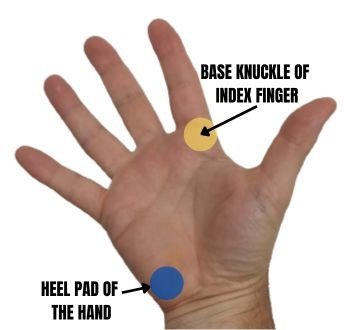Introduction
Are you aware that your choice of tennis grips can have a profound impact on your game, influencing both your performance and comfort levels on the court?
Tennis grips are a fundamental aspect of the sport, shaping the variety of shots you can successfully perform.
As tennis equipment and court surfaces have advanced over the years, so have the grips used by players.
In this comprehensive guide, we explore the primary tennis grip types and provide insights on selecting the one that aligns perfectly with your unique style of play.
Anatomy of the Tennis Grip
The handle of a tennis racquet is designed in an octagonal shape, which is standard across all racquets.
This shape is divided into eight equal sides, known as bevels. These bevels are numbered from 1 to 8, starting from the top flat surface when the strings are perpendicular to the ground.

The way to determine the grip type is where the base knuckle of the index finger and the heel pad of the hand are placed on these bevels.

The placement of these parts of your hand on different bevels results in different grip types, each offering unique advantages and impacting how you hit the ball.
Main Types of Grips
In this section, I’ll explore grip theory and provide insights on the hands positioning for each grip.
I personally employ a range of “in-between” grips, selecting them based on the specific shot, my comfort level, and what yields the best results for my game.
For a glimpse into my personal experiences, take a look at the yellow boxes located at the end of each grip description.
Continental Grip
The Continental Grip is one of the most versatile and is used for serves, volleys, lobs, slices, and defensive shots.
It is characterized by placing the base knuckle of the index finger on bevel #2 for right-handed players.
Pros
Cons
I employ the Continental Grip for all my slices and volleys.
When it comes to serving, I make a unique adjustment by shifting half a bevel towards bevel #1, approaching a grip resembling a one-handed backhand.
This adjustment sacrifices some power, but significantly enhances my ability to generate spin.
Eastern Forehand Grip

This grip is characterized by the base knuckle of the index finger being placed on the third bevel.
Pros
Cons
It’s a versatile grip that allows for a variety of shots and is particularly effective for flat and topspin shots.
Semi-Western Forehand Grip

Pros
Cons
The Semi-Western Forehand Grip involves placing the base knuckle of the index finger on the fourth bevel.
This grip allows for a good balance of power and control, and is excellent for generating topspin.
Western Forehand Grip
Pros
Cons
In the Western Forehand Grip, the base knuckle of the index finger is placed on the fifth bevel.
This grip allows for extreme topspin, but can be challenging to use for low balls or volleys.
Eastern One-Handed Backhand Grip
Pros
Cons
The Eastern One-Handed Backhand Grip is characterized by the base knuckle of the index finger being placed on the first bevel.
It’s a versatile grip that’s great for flat and slice shots.
Two-Handed Backhand Grips
Pros
Cons
The non-dominant hand is usually in an Eastern Forehand position, while the dominant hand is in a Continental Grip position.
This grip provides exceptional control and power, making it a popular choice among many players.
Tips for Grip Selection
Choosing the right grip is a personal decision and largely depends on your playing style and strengths/weaknesses.
It’s important to experiment with different grips to find the one that feels most comfortable and enhances your game.
Many players use a combination of grips depending on the shot they’re executing.
For instance, I use a Semi-Western Forehand Grip for my forehand shots and a Continental Grip for serves and volleys.
The key is to practice transitioning quickly between different grips as the situation demands.
Conclusion
Here is what you should have learned:
- All players should learn about the various tennis grips.
- Different grips offer unique advantages and influence ball striking.
- Common types include Continental, Eastern Forehand, Semi-Western Forehand, Western Forehand, Eastern One-Handed Backhand, and Two-Handed Backhand.
- A proper grip can enhance consistency, spin, power, and touch in tennis.
- The ideal grip depends on personal comfort, playing style, and the shot being executed.
- Experimenting with grips can help you find your comfort zone and enhance your game and enjoyment of tennis.
Learn more about other aspects of tennis such as rules, equipment, or scoring on my website: https://tennislearningcenter.com/.
F.A.Q.
The Eastern Forehand Grip is typically recommended for beginners, as it offers a good balance of power and control with moderate topspin.
Quick transitions between different grips come with practice. Drills that require you to switch between forehand and backhand or serve and volley can help improve your grip transition speed.
While the type of racquet can influence your comfort with certain grips, it’s more important to choose a grip that suits your playing style and the specific shot you’re executing.
Yes, many players use a combination of grips depending on the shot they’re executing. For instance, you might use a Semi-Western Forehand Grip for your forehand shots and a Continental Grip for your serves and volleys.
Some common mistakes include gripping the racquet too tightly, not using the base knuckle of the index finger to guide the grip, and not experimenting with different grips to find what works best for them.



